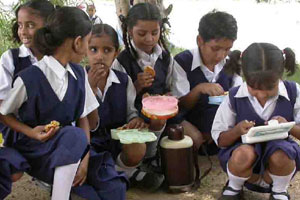Sex ratio: J&K,Maharashtra,Rajasthan new problem areas
95 per cent of districts in Maharashtra and Rajasthan saw a further decline in sex ratio.

Maharashtra,Rajasthan and Jammu and Kashmir are emerging as the new hotspots of declining sex ratio in India,according to a recent study published in reputed journal The Lancet.
According to the study,about 95 per cent of districts in Maharashtra and Rajasthan have witnessed further decline in sex ratio,slipping towards the range of traditional hotspots. In Jammu and Kashmir,over 90 per cent districts have witnessed a sharp decline in sex ratio.
monthly limit of free stories.
with an Express account.
The good news is that traditional hotspots Punjab and Haryana have witnessed a jump in the sex ratio along with Gujarat. In fact,all the districts of Punjab have witnessed a jump in the child (0-6 years group) sex ratio,while in Haryana 16 out of 21 districts saw a jump in the child sex ratio during 2001-2011.
The big surprise,according to Prabhat Jha,the lead researcher of the study,is Maharashtra,which has shown sharp decline in sex ratio. Barring Sangli and Chandrapur,33 of 35 districts witnessed decline in sex ratio. The decline in these districts is much more than the national average of 1.4 per cent. Districts like Latur,Ahmadnagar,Nashik,Parbhani,Washim,Hingoli,Jalna,Buldana,Osamabad witnessed a massive decline. These districts figure in the top 30 districts that have witnessed sharp decline in sex ratio during last one decade.
Rajasthan has a similar story. Barring Ganganagar and Jaisalmer districts,31 of 33 districts witnessed sharp decline in sex ratio. In fact,29 of its districts have sex ratio decline sharper than the national average.
In Jammu and Kashmir,20 out of 22 districts saw the same phenomenon over the past decade. Seven districts Pulwama,Badgam,Anantnag,Kupwara,Baramulla,Rajouri and Srinagar also are among those that witnessed the worst. In fact,five of these districts have witnessed an absolute decline of more than 100 in the sex ratio between 2001 and 2011. Only Leh and Kargil districts have shown a better performance.
MATTER OF CONCERN
* In all,of the 563 districts whose comparative data for 2001 and 2011 census is available,only 158 districts witnessed a jump in the sex ratio during last one decade.
* The study,by Toronto-based research organisation Center for Global Health Research,says that of the remaining 405 districts,278 showed sex ratio decline of more than the national average of 1.4 per cent.